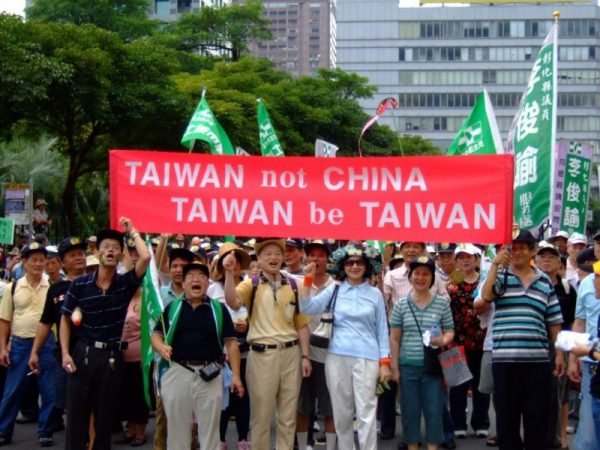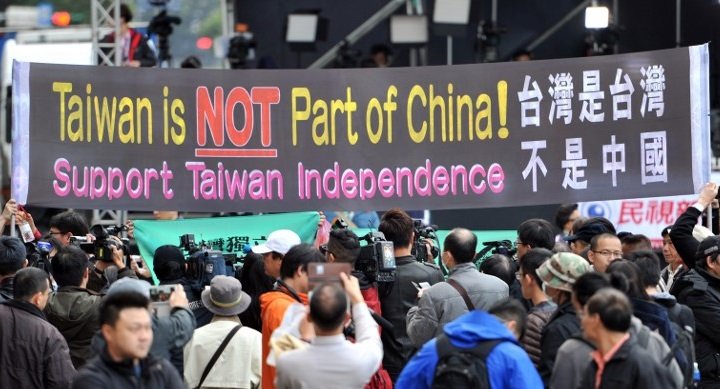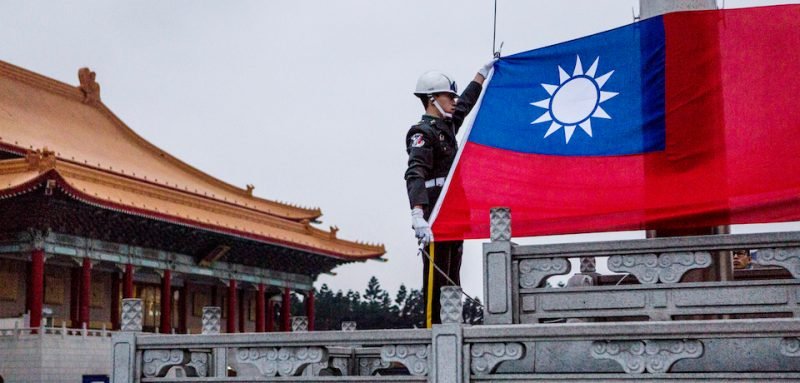Taiwan and the prospects of reunification: Will Taiwan live under the ‘One China’ Principle?

China and Taiwan are one of the nations which had to face divisions post world war, during the cold war. Germany and Korea were divided by the victors in the aftermath of World War II, and China was divided by a civil war immediately after World War II; only Vietnam was divided during the Cold War. But in all cases, the basis of the division was the ideological split between capitalism and communism that defined the Cold War. The division across Strait was meant to be temporary but the idea of reunification soon turned out to be unlikely and intractable owing to the ideological war. The article is divided into three parts to explain how the stance on reunification has changed with time.
Part I- The original legitimacy basis for reunification
The Chinese claim to Taiwan is both historical and ethnolinguistic. Drawing upon the historical context, there has been a constant debate among scholars and historians about the historical connections of Taiwan with China. Some mainland historians claim that Taiwan was a part of China since Sui Dynasty (598-618). And certain histories of the dynasties (Ming dynasty) do not give any reference of Taiwan being part of their administrative province which concludes that Taiwan might be nothing more than a frontier region for these dynasties. The fertile land and moderate climate attracted a number of settlers. Battle of Penghu (1683) was a naval battle fought between the Kingdom of Tungning based in Taiwan and the Qing dynasty of China. On being outmanoeuvred, the Tungning dynasty lost to the Qing dynasty. As a victory reward, the Qing dynasty annexed the island as a prefecture for Fujian province. Only in 1887 did Taiwan become an imperial province when Japan annexed China after China’s defeat in the Sino-Japanese war and remained a colony from 1895-1945.
The Nationalists or the Kuomintang aggressively struggled to reestablish the Chinese control in 1945-47 but retreated to the island upon losing the civil war on mainland China in 1949 against the CCP with an intention of reclaiming the original order. On the other hand, the PRC intended to assimilate the island into mainland China, thus finally ending their revolutionary battle and “one hundred years of humiliation” by putting an end to the ‘unequal treaty’ of Shimonoseki that ceded Taiwan to Japan.
From ethnolinguistic perspective, the majority of the population speak local dialect of Mandarin (about 83.5% of the population), trace their lineage from the Han Chinese (95% of population) and observe Chinese rituals.
Though the interest for reunification forms the necessary core in the relations between both sides of the strait, there is no consensus between them on who should rule the unified state and on what mode of governance. Thus, the stronger side, greedy for the greater interest, is willing to resort to the use of force for reunification under the premise that it will continue to dominate the unified state, the reason why the weaker state has been procrastinating on the idea of reunification.

Part-II Critical analysis of the change in stance on reunification since 1949
This part entails what’s holding Taiwan back for reunification even after the historical legacy supporting it. Taiwan is ruled by parties based on two distinct factions- Blue(KMT) and Green(DPP). The DPP claims that Taiwan has not been part of China for over a century and has managed to retain a self-ruled government, fulfilling all the requirements of statehood and thus are inclined towards ‘independence’ of the island. Whereas, KMT believes that Taiwan was internationally recognized post Xinhai rebellion in 1911 and it was never defeated but were forced to take refuge in Taiwan where it continues to claim its hold over the Chinese mainland. The first argument has garnered support from the Taiwanese population whereas the second argument is tacitly accepted by Beijing under the premise of “One China” defined by each side in the 1992 consensus. In the initial decades of Taiwan’s existence, warlike conditions prevailed, with each side aspiring to claim over the other’s land. Since, replacing Taiwan in the UN in 1971, the PRC has refused to conclude diplomatic ties with states vocal about their support for Taiwan’s independent recognition. The cold war ended two decades earlier in Asia, not only furthering the chances of terminating deadlock between Taiwan and China, but also strengthening economic ties. Beijing proposed the “three direct links” across the Strait (travel, trade and postal) and propagated ‘One Country, two systems” to provide greater autonomy to Taiwan which was met with an immediate response from Chiang Ching-kuo with “three nos” (no contact, no compromise, no negotiation). The succeeding Lee Teng-hui established National Unification Council which in 1991, issued ‘National Unification Guidelines” affirming the goal of ultimate reunification under the premise of preserving Chinese culture and the achievement of political democracy, economic liberalization and social pluralism in PRC. Although the “three direct links” were never discussed upon but trade, indirect investment and travel grew consistently via Hong Kong. Meanwhile, both sides reflected continued distrust: Taiwan engaged in a rapprochement with China but coupled it with diplomatic steps to the west via ‘flexible diplomacy’; Beijing, on the other hand, maintained its pledge for peaceful reunification but established military buildups on the Fujian coast.
The DPP, deprived of official communication with the mainland, advanced towards the idea of “de-Sinicization” to build Taiwanese nationalism by galvanizing support against ‘Chinese threats’ and utilizing soft power which eventually brought the percentage of the population supporting reunification down to 10% in 2012. After the reelection of Chen in 2004, Beijing resorted to the policy of “harder sticks and sweeter carrots”. Hu Jintao not only proposed resuming negotiations on “three links” but also passed the Anti-Secession Law in 2005, authorizing non-peaceful means in response to Taiwan’s declaration of formal independence. Another discontentment arose when Chen Shui-bian froze the National Unification Council and National Unification Guidelines in early 2006, violating the “five nos” he had promised (no declaration of independence; no change in the ROC’s name: no ‘state-to-state description in the constitution’; no referendum to change the status quo; no abolition of the National Unification Council or the Guidelines for National Unification). By incentivizing peace and depriving the DPP of a mainland threat to fulminate against, Beijing contributed to the victory of KMT in elections in 2008.
Ma Ying-jeou cognizant of the fact that the domestic population has shifted its stance from reunification’ shifted the attention of the masses towards the economic development from the battle of national identity. Ma administration reconciled with the mainland on the pretext of developing island’s economy but also issued “three nos” (no unification, no independence and no war) to persuade the electorates of their shared discontentment against China. The two sides finally brought the “three direct links” on the table facilitating trade and tourism across the strait. After winning the second term, Ma administration launched a ‘re-Sinification’ to garner support for ROC. Distancing himself from the political talks, Ma negotiated for the economic integration through the Cross Strait Service Trade Agreement (CSTA) with China . The proposal was widely resented which led to student-led protest known as ‘Sunflower Movement’ who perceived this trade pact to be detrimental for island’s economy and thus demanded ‘clause by clause’ review. By the end of 2014, to quell the dissent, PLA had ballistic and cruise missiles targeting Taiwan, ten times more than in 2000. To ensure that the US doesn’t come to defend Taiwan, China focused on advanced A2AD (Anti-Access Area Denial) weapons to impede the US from entering the Strait and lastly, forbade countries to sell weapons to Taiwan amounting to interference in China’s internal affairs.
During 2016 elections, KMT suffered a defeat leading to the first-ever majority of DPP with 56% votes. While President Tsai Ing-wen continued having beneficial relations with the mainland, she has refused to endorse the 1992 consensus. Tsai is widely known for her book “two states” published in 1999 where she asserted the framing of PRC-ROC relations as ‘state-to-state’ relations. Since Tsai took the charge, even though diplomatic ties have been severed between Taiwan and mainland China, economic integration continues to flourish without political interference.

Part-III – Why is Taiwan procrastinating on reunification?
Beijing has always wanted the process of reunification on its own terms. Beijing chose a path-dependent strategy where Taiwan would be engaged in the web of socio-economic ties. The three essential components of the strategy were: (1) contingent use of force (2) socioeconomic convergence (3) asymmetry in political power.
Contingent use of force- In all these years, China has threatened the use of coercive force to ‘liberate’ Taiwan and even persuaded Taiwan to give up its claim of sovereignty over mainland China under the ‘one-China principle”. China has even decimated the probability of the US intervention by making the intervention much costlier than in 1996 and thus boasting a credible deterrent against US nuclear blackmail. Unless China can prevent such intervention, a confrontation would result either in asymmetric war or in an embarrassing capitulation and would tend to discredit Chinese threats, as in 1996. Besides the inferior military forces of Taiwan than the ones, they’re rallying against, if the US realizes that Taiwan’s autonomy is not worth the cost, without firing a shot China can lay its hands over Taiwan. What China really needs from the United States is a promise not to intervene in case it uses force across the Strait, but it would contradict China’s claim to a peaceful reunification and would incur blowback from Taiwan.
Socioeconomic convergence- The advent of ‘reform and opening’ under Deng Xiaoping accelerated economic modernization. The nascent market economy benefitted some people but seriously disadvantaged others and the one-party political system also faced a challenge to its legitimacy leading to the Tiananmen Square protests in 1989 against the proposed reforms. But China under Deng’s leadership continued with the idea of opening its economy, prepared itself for entering into World Trade Organization and adopted many such international “best practices” which culminated in the economic boom rarely seen in world history. Meanwhile, Taiwan shifted from the martial law regime to an organized democratic, capitalist regime supporting export-oriented growth. As economic growth boomed on both sides of the Strait, the mutual advantages of economic and cultural complementarity became obvious. But since the takeover by Xi Jinping, the ideological convergence has been diminished which was established during Deng Xiaoping’s regime. The basic force of convergence has been economic. China helped salvage Taiwan in 2009 with a huge stimulus package. Over 60% of Taiwan’s economy is dependent on exports and China and Hong Kong are Taiwan’s biggest trading partners but Taiwan’s exports have been very choppy, plummeted into negative territory again in 2015; partly because of the annual decline of China’s GDP growth but more because of the “red supply chain” of Chinese manufacturers. Meanwhile, the impact of outsourcing in Taiwan shows a decline in employment opportunities, the reason why Taiwan’s youth backed the 2014 Sunflower movement proposing their distrust in the CSTA. To sum up, the economic variable is not leading to convergence but merely to a growth that has declined on both sides of the Strait; therefore, to base reunification on an economic variable would be unsuited.
Asymmetry in political power- The logic of asymmetry implies that the stronger state must be exceedingly gentle in order to build the confidence of a weaker counterpart facing greater risks but this is clearly contrary to what China believes in. The best time for possible reunification was when considerable symmetry was observed. In the past, despite Taiwan’s small size, it had an economy half as big as China’s. Today, trade interdependency has become more asymmetrical since Taiwan would have more to lose than China owing to its weaker economy. In terms of military power, the asymmetry is even more astonishing. Beijing’s military budget has risen eight-fold in the last twenty years whereas PRC has been dissuading other countries from selling arms to Taiwan creating a greater gap and thus asymmetry. Beijing is confident of its ability to defeat Taiwan which does not create a conducive environment for reunification. Hong Kong’s recent experience forces Taiwan to imagine a gloomy picture for themselves if in the near future reunification takes place.

Conclusion
Even for an instance, if Beijing overlooks the declaration of independence by Taiwan, the strong economic, sociocultural ties would not let the island go far away from Beijing. The fundamental reasons for the decreasing prospects of reunification lies in the constant threatening by China on the use of force. It would be better if the threat of force could be completely removed from the picture, but that would require more trust than is currently at hand. Secondly, the socio-economic convergence has failed to make progress towards changing the national identity. Since, mutual understanding of the economic benefits necessarily would not lead to mutual political commitment. The Taiwanese have been able to differentiate between economic convergence and political assimilation and has been accepting the former while evading the latter. Thirdly, the problem of relative gains on reunification which would benefit the mightier side than the weaker. Fourthly, The Taiwan-China relationship has become steeply asymmetrical, disincentivising Taiwan to move towards reunification. Thus, even though Taiwan cannot really break itself from mainland China pertaining to strong socioeconomic and geo-economic ties, it’s apparently unlikely even for China to fulfil its dream of ideological homogeneity under “one China”.



















